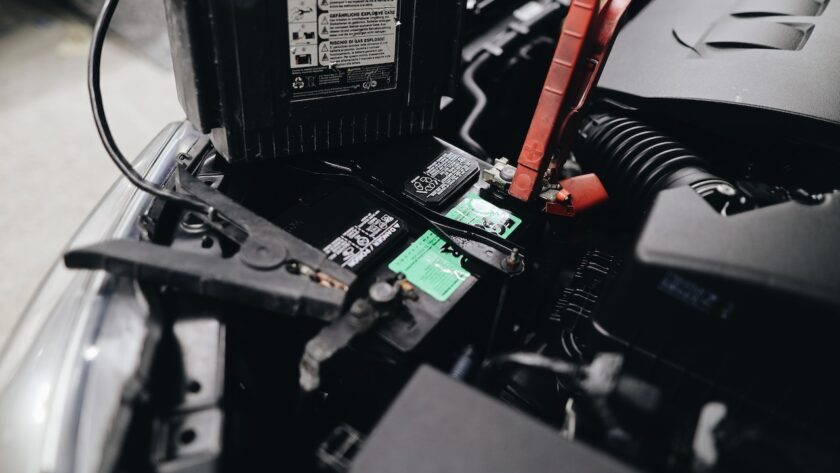Refurbished batteries offer electric car owners a cost-effective and sustainable alternative to new ones. They can also provide better performance. Additionally, they can be repowered in used forklifts and contribute to a circular economy.
There are many ways to cut costs without sacrificing quality. One way is to review and renegotiate your supplier contracts for better terms. Another way is to streamline your operations.
Refurbished batteries are cheaper than new ones.
Refurbished batteries are an increasingly attractive option for electric car owners. They are cheaper than new batteries and can offer the same performance. They are also more sustainable, as they avoid creating a new battery from scratch and reduce waste.
The battery refurbishment process starts with testing the battery to determine whether it is fit for reconditioning. If it is, a unique mixture of chemicals is added to boost the dissolving of the acid crystals in the lead plates. This will increase the specific gravity of the electrolyte and expand the battery capacity. The reconditioned battery is then set for a normal recharging process.
Rechargeable batteries, such as those used in electric cars, are made of lithium-ion and lead acid, which can cause environmental damage when disposed of improperly. The battery manufacturing process requires heavy metals, water, and energy and releases greenhouse gases. Refurbished batteries help to reduce the number of used batteries that end up in landfills and prevent toxic pollutants from polluting the environment.
A common myth is that rechargeable batteries don’t last long, but this is not true. Many factors influence a battery’s lifespan, including how it is used and charged. The best way to extend the life of your battery is to use it only for short trips, charge it frequently, and maintain it properly. It is also good to dispose of old batteries at dedicated drop-off points to keep them out of landfills.
They are more sustainable.
Refurbished batteries offer a cost-effective and sustainable alternative to new ones. They are also more environmentally friendly, as they reduce the amount of battery acid and scrap metal in landfills. In addition, they are compatible with most electric car models and perform just as well.
Rechargeable batteries take a toll on the environment in manufacturing, as they contain toxic chemicals and heavy metals. However, the increased lifespan of rechargeable batteries offsets some of this impact. In addition, using renewable or recycled materials in manufacturing can further reduce rechargeable batteries’ environmental footprint.
While rechargeable batteries are suitable for devices that pull a small amount of energy over long periods, single-use disposable batteries may be more appropriate for products that require a high energy level in short bursts, such as smoke detectors or your kid’s toy car. Additionally, many utilities charge customers on a demand basis, meaning using a battery during high electricity usage can help you avoid paying more for your power.
They plan to open more showrooms, allowing users to trade out their lead-acid batteries for a quick recharge. This could be particularly useful for ride-hailing and delivery fleets, where even modest downtime reduces driver earnings.
They are environmentally friendly.
Many people believe that refurbished batteries have less energy capacity than new ones. However, the truth is that refurbished batteries go through a process that restores most of their original energy capacity. As long as the battery is from a reputable refurbishing company, it can be as reliable and efficient as a new one.
Refurbished batteries are also more environmentally friendly than new batteries, as they reduce the amount of waste produced. This is because creating a new battery from scratch uses many resources, including water and energy. Moreover, creating vast networks of swappable packs that require storage, charging, and maintenance would be expensive and resource-intensive.
Another reason why refurbished batteries are better for the environment is their longer lifespan. They are more durable than disposable rechargeable batteries, which degrade over time due to sulfation, the accumulation of rigid lead sulfate crystals that cannot be loosened with a standard charger. As a result, fewer lead plates come into contact with the battery acid, increasing the electricity required for charging and reducing the battery’s lifespan.
In addition, refurbished batteries are safer than disposable batteries because they do not contain heavy metals that can leach into the environment. Lastly, they are cheaper than new batteries and help keep electric car costs affordable for consumers.
They are more reliable.
Refurbished batteries are a great alternative to new ones and offer many advantages. They are cheaper, have a lower environmental impact, and can provide the same performance as new batteries. Refurbishing a battery involves testing, repairing, and reconditioning it to restore its original condition. This ensures that the battery operates optimally. It also reduces the need for new batteries to be manufactured, which helps save energy and resources. Refurbished batteries are compatible with various electric cars and are an excellent choice for those who want to save money and support sustainability efforts.
Reconditioning batteries is a simple procedure that anyone can do at home. The first step is to drain the battery and remove any corrosion. Then, recondition the battery by charging and discharging it several times. After reconditioning, the battery can hold its charge longer than a new one. It is important to note that a battery should be reconditioned thrice at most, as it will lose its efficiency and performance afterward.
Battery refurbishment is a promising industry, but some things must be clarified to prevent it from becoming widespread. One common myth is that refurbished batteries are unreliable and don’t last long. However, this is different, especially when refurbished by a reputable company with stringent testing standards and warranty coverage.




